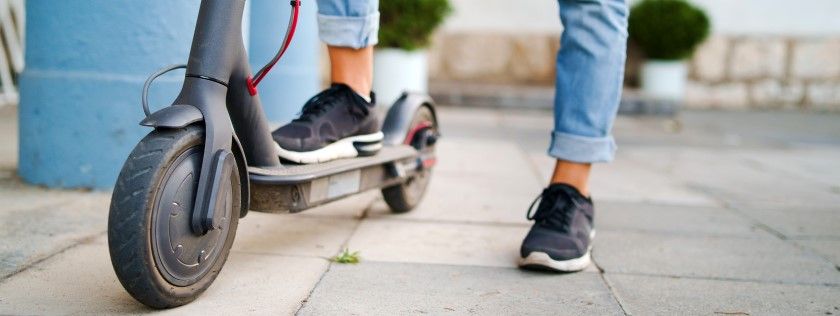E-scooters at Christmas: a great gift or a holiday hazard?

Earlier this year we considered the hype and rules around e-scooters.
Some saw it as the latest fun gadget to be enjoyed – others saw it as a dangerous mode of transport that required tough rules and enforcement.
Arguably, e-scooters really took hold during the first COVID lockdown when streets were quiet due to less traffic and after nearly two years their popularity shows no sign of slowing down.
Some even think the two-wheeled gizmos could be one of the most popular gifts given this Christmas.
With that in mind, it’s probably worth a recap of what the lie of the land actually is because the last thing you want is for a new gift to land someone in a police station – or the hospital.
What are the rules around e-scooters?
Before we go into details it makes sense to have a recap of the basic rules around e-scooters.
Are e-scooters legal?
Yes. (Kind of). Currently there are no laws to stop people buying and owning an e-scooter. It’s what you do with it that matters.
Can I ride my e-scooter on the pavement?
No. E-scooters essentially need to follow the same rules as cars. This is because they are motorised. They are also designed in such a way that the law does not recognise them as an exception like a mobility scooter.
Can I ride my e-scooter on the road then?
No. Again, this is because it needs to follow the same rules as a car – that means the rider needs insurance, road tax, a driving licence and compliance with vehicle construction regulations (basically, the e-scooter equivalent of an MOT).
I have a full driving license for my car – does that make me safe to take on the road? No because the issues of tax, insurance and MOT would still need to apply.
So where can I ride my e-scooter?
At the moment you are only allowed to ride e-scooters on private land – with the land owner’s permission.
Traditional scooters were not designed for the road and no one thinks twice when a child rides one on the pavement.
Most road users are fair and reasonable and follow the rules with due consideration for others.
It’s easy to understand then why so many feel frustrated at seeing an e-scooter rider illegally whizzing along roads or pavements.
And there lies the Catch-22 of e-scooters: they are too big, fast and dangerous for pavements – but too small, exposed and slow for the roads.
How many people are hurt by e-scooters?
In 2020 the Government agreed for a number of cities and towns to trial e-scooter use (however none were in Scotland).
The e-scooters had a limited speed of 15.5mph speed limit and could only be used on roads or cycle lanes – helmet use was also compulsory.
But new government data shows that between June 2020 and June 2021 there were 882 accidents involving e-scooters reported to police.
Injured scooter riders most likely to be male and under 30 and the most common time for accidents was around 5pm.
And despite these figures relating to accidents where police were involved, only 15 riders were issued with a fine and only 406 e-scooters were confiscated after a crash (less than half of those involved in accidents).
It should also be noted that crash data is likely to be higher as the official report does not include people who went to A&E on their own or failed to report an e-scooter accident.
What next for e-scooters?
So where might we see them in the future?
It’s hard to say. We need more data and more trials to know for sure.
But if you want a solid piece of advice for Christmas there is only one thing that can be said:
If you’re going to gift someone an e-scooter for Christmas then make sure they have access to private land (with permission where required) where they can use their scooter safely and legally.